Opinion
Why the Art World Is Desperately Seeking Forgotten Artists
Forgotten artists have become the art world’s hot new go-to commodities.
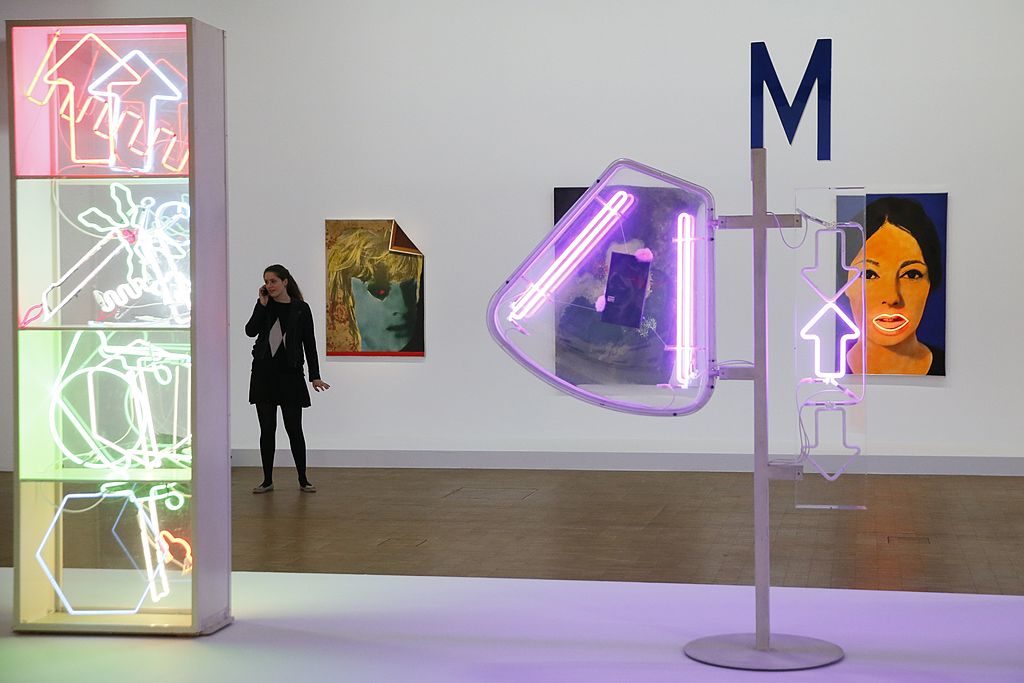
Forgotten artists have become the art world’s hot new go-to commodities.

In May, the painter Carmen Herrera surveyed her first US solo show in a decade at New York’s Lisson Gallery and wept with joy. She had ample reason to. Besides being represented by one of the world’s most important galleries, she had canvases on view in the permanent collections of the Museum of Modern Art, the Hirshhorn, the Tate, as well as an upcoming retrospective at the Whitney (opening September 16).
Not bad for a 101-year-old emerging artist—who sold her first painting at the age of 89.
Herrera’s story, remarkable as it may seem, is only one of a slew of artistic rediscoveries fueled by a renewed interest in older, more established figures to replace today’s lowered expectations for younger artists. Because confidence has slipped in recent years for trendy market darlings—consider the auction house flameouts of painters Jacob Kassay and Anselm Reyle—Herrera’s second act offers an accomplished alternative to the art world’s superficial insistence on youth. Nearly as important in this particular artist’s recovery: Herrera’s workaday example as an art lifer also appeals to the culture’s newfound sobriety.
The beloved, wheelchair-bound artist fell off the art world’s radar around 1954, when she and her American husband moved from Paris to New York. In Manhattan the couple encountered a scene dominated by legendary alpha males. Even after becoming friendly with several Abstract Expressionists—including Mark Rothko and Barnett Newman—the artist could not catch a break. As one woman dealer put it to Herrera after visiting a studio full of colorful geometric canvases: “You can paint circles around my men artists, but I’m not going to show you because you are a woman.”
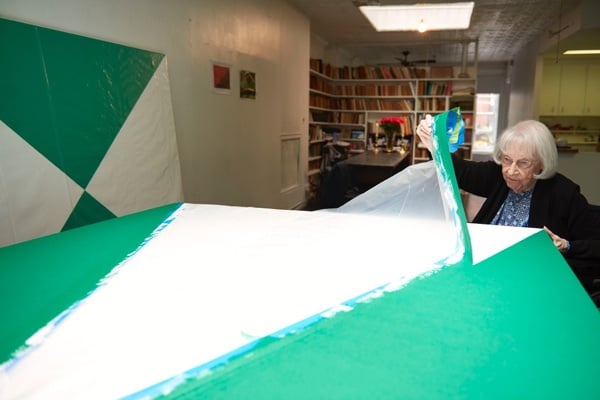
Carmen Herrera at work on a painting. Courtesy Jacob Schmidt.
So began Herrera’s nearly 50-year stint in the wilderness—an exile that was relieved only when the painter was well past retirement age. During the last decade, the critical consensus around Herrera’s hard edge abstract work turned distinctly canonical. But how does it happen that an artist like Herrera is sidelined, forgotten, and then rediscovered by the art world—only to later have her artwork elevated to blue-chip status?
According to New York’s Phoebe Hoban, Herrera emerged from art history’s deep freeze with more than a little help from her friends. Museo del Barrio chairman Tony Bechara, a longtime supporter, was key in obtaining an exhibition for the painter at that museum in 1998. Later, he recommended Herrera for a group show at Federico Sève’s Latin Collector gallery (another artist had dropped out of an exhibition of female geometric painters). Sève got Miami-based collector Ella Cisneros to buy several paintings; in time, so did Agnes Gund, president emerita of MoMA.
But Herrera’s story, inspiring as it is today, is hardly anomalous. With increased volatility characterizing an expanded art market, museums, galleries, and collectors have increasingly learned to find, cultivate, and promote their own Rip Van Winkle artist stories.
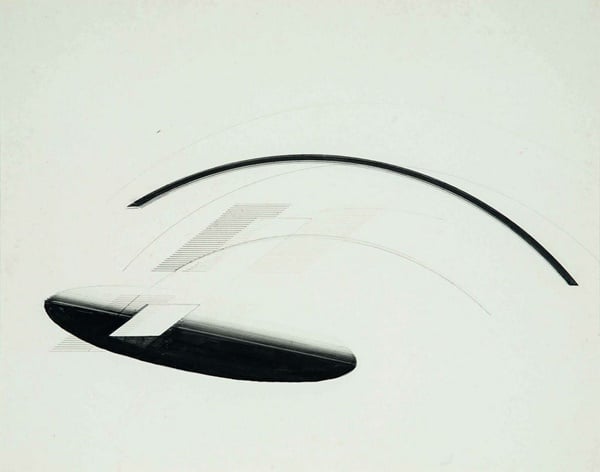
Nasreen Mohamedi, Untitled (1980).
Take the pen and ink geometric drawings of the late Indian artist Nasreem Mohamedi. When the artist died in 1990 at the age of 53, her work was virtually unknown outside of her native country. But in the last few years, she has been the subject of two major international museum exhibitions. The first was at Madrid’s Reina Sofia museum, the other at the recently inaugurated Met Breuer, where it had pride of place as the institution’s inaugural solo exhibition. Key in those developments was Nita Ambani, India’s richest woman. The deep-pocked collector sponsored both exhibitions: The Wall Street Journal estimates the cost for Ambani’s patronage at somewhere between $500,000 and $5 million.
Here’s another instance of a recent career revival by an older artist: In 2014, French pop painter and neon artist Martial Raysse celebrated his first solo show in New York in more than 40 years. In preparation for the then-78-year-old’s show, Luxembourg & Dayan laid out an impressive spread. The gallery hosted a luncheon for 60 journalists, a Michelin-starred dinner for 30 collectors and curators, and printed up a hardcover catalog with all the scholarly trimmings. According to Bloomberg, only a couple of Raysse’s paintings were available for sale (the prices ranged between $500,000 and $2 million).
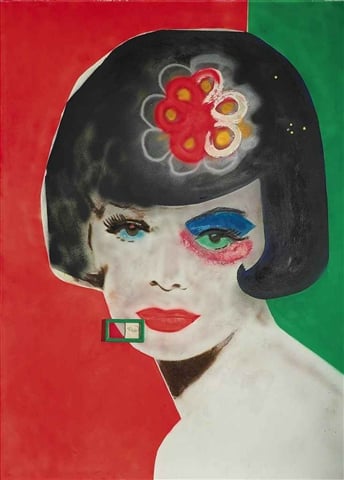
Martial Raysse, L’année dernière à Capri (titre exotique), (1962).
In a recent interview with Spain’s El Pais, Bartomeu Marí—the director of Seoul’s National Museum of Modern and Contemporary Art—put the phenomena of second acts for artists in a nutshell. “Both the market and museums are in constant need of novelty,” he said, “one of the categories that has seen the greatest consolidation in the last fifteen years is that of the seasoned (or dead) artist whose work is positively reevaluated in the present.” Besides rewriting history, important players like Marí—who is himself heavily committed to 1970s Korean Dansaekhwa, or monochrome painting—carefully cultivate the ability to shepherd a mature and commercially viable body of work.
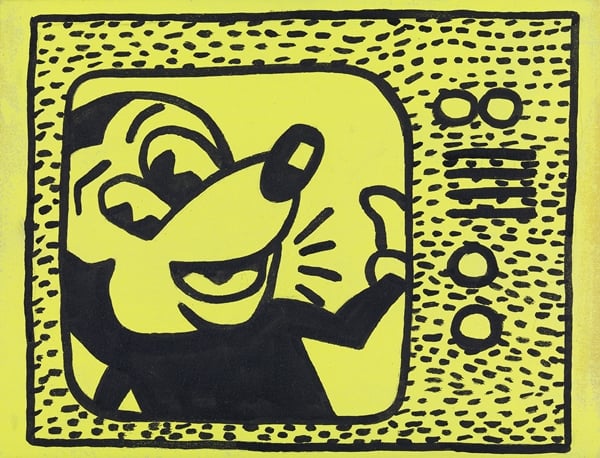
Sturtevant, Haring Tag July 15 1981 (1985). Courtesy Prallen Allsten. © Sturtevant.
That is certainly part of the appeal of disremembered artists such as Giorgio Griffa (80 years old), McArthur Binion (70), and Sam Gilliam (82), or the now-dearly departed, such as Elaine Sturtevant (1924-2014), and Germaine Richier (1902-1959).
Unsurprisingly, Herrera’s retrospective at the Whitney is not the only second act on view this summer and fall. Among shows presently ongoing or scheduled are revivals of the work of late sculptor and filmmaker Bruce Conner (MoMA), 74-year-old photographer Danny Lyon (Whitney) and 75-year-old conceptualist Victor Burgin (Cristin Tierney).
In this era of excavation and rediscovery, art history has not only become more diverse, it is also increasingly tied to the market. Today, much more than yesterday, forgotten artists have become the art world’s hot new go-to commodities.